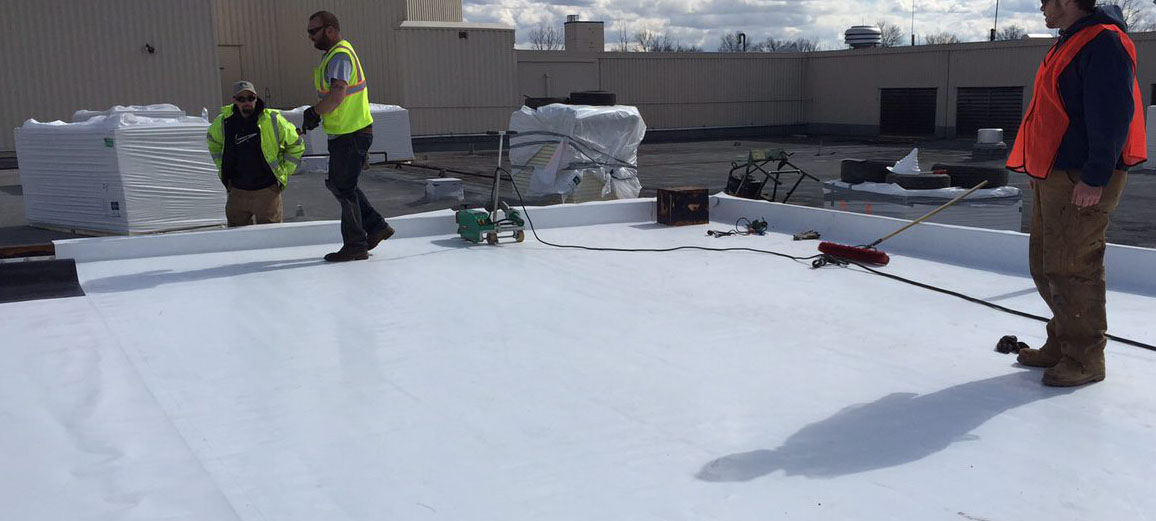Thermoplastic Olefin (TPO) is a type of single-ply roofing membrane commonly used in commercial and industrial roofing applications. It is known for its durability, energy efficiency, and ease of installation. TPO roofing membranes are composed of a blend of thermoplastic polymers, typically polypropylene and ethylene-propylene rubber, reinforced with polyester or fiberglass scrim. Here’s an overview of TPO roofing systems:
- Composition: TPO roofing membranes are manufactured using a blend of thermoplastic polymers, including polypropylene and ethylene-propylene rubber (EP rubber). These polymers are combined to create a flexible and durable membrane that can withstand environmental stresses such as UV radiation, heat, and weathering.
- Installation Methods:
- Mechanically Attached: TPO membranes can be mechanically attached to the roof substrate using screws and plates. This method involves securing the membrane to the roof deck at regular intervals using fasteners.
- Fully Adhered: Alternatively, TPO membranes can be fully adhered to the roof substrate using adhesive. Adhesive is applied to the underside of the membrane, and then it is bonded directly to the roof deck.
- Heat Welding: TPO membranes are installed in rolls, and seams are typically heat-welded together to create a continuous, watertight seal. Heat welding fuses the overlapping seams to form a strong bond that is resistant to water infiltration and mechanical stresses.
- Reflectivity and Energy Efficiency: TPO roofing membranes are available in white and light-colored formulations, which offer high reflectivity and thermal emissivity. This helps reduce heat absorption into the building, lowering cooling costs and improving energy efficiency.
- UV Resistance: TPO roofing membranes are inherently resistant to UV radiation and do not require additional coatings or treatments to protect against UV degradation. This UV resistance helps prolong the lifespan of the membrane and maintain its aesthetic appearance over time.
- Flexibility and Dimensional Stability: TPO membranes are highly flexible and can accommodate building movement and temperature fluctuations without cracking or splitting. They also exhibit excellent dimensional stability, meaning they do not shrink or expand significantly over time.
- Durability and Longevity: When properly installed and maintained, TPO roofing systems can have a lifespan of 20 to 30 years or more. They offer excellent resistance to weathering, chemical exposure, and environmental contaminants, contributing to their long-term durability.
- Low Maintenance: TPO roofing systems require minimal maintenance, typically consisting of periodic inspections and cleaning to remove debris and ensure drainage. Repair to punctures or damaged areas can be done by patching or heat-welding new membrane material over the affected area.
Overall, TPO roofing systems offer a reliable and cost-effective solution for commercial and industrial buildings, providing superior waterproofing, durability, energy efficiency, and ease of installation. It’s important to work with experienced roofing professionals to ensure proper installation and maintenance of TPO roofing systems to maximize their performance and lifespan.

